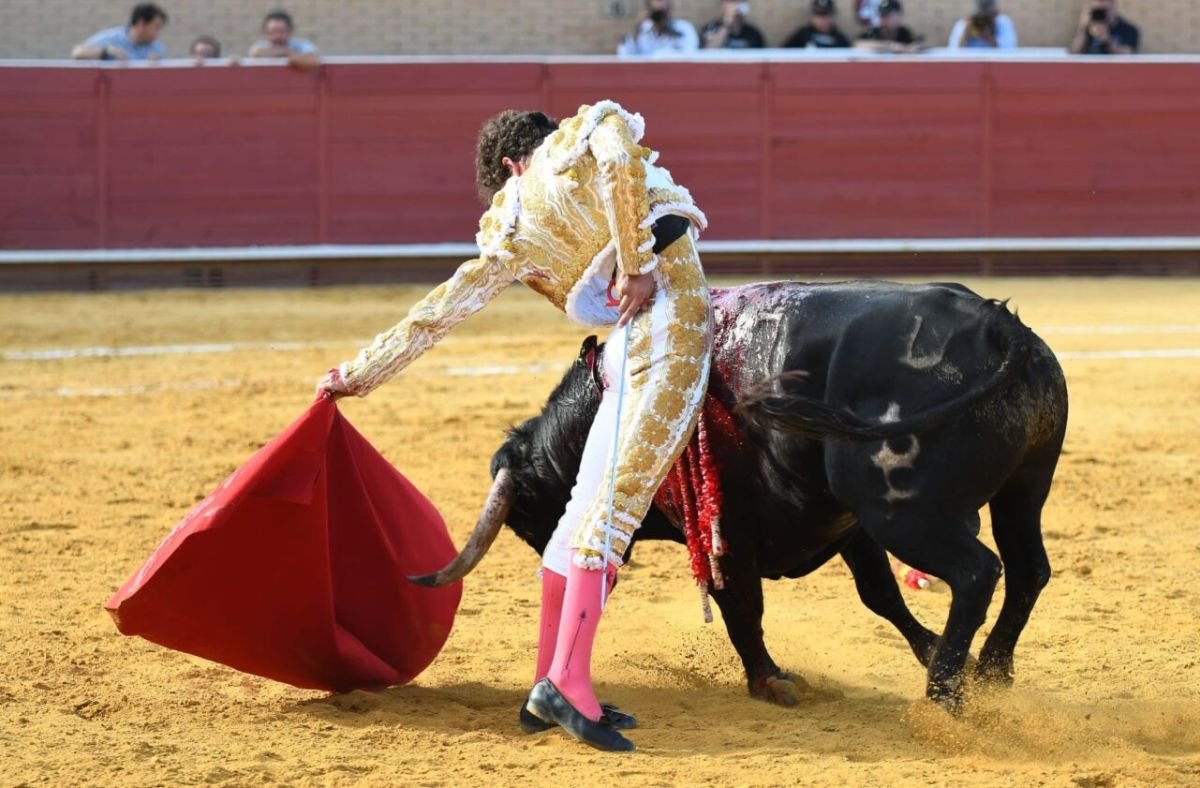A people’s fiesta that ignores the people
There have been two glaring examples recently of plaza presidents ignoring strong petitions for the award of a second ear to a matador. In Las Ventas on June 7, the president was almost alone in not seeing the merits of Borja Jiménez’s performance with a bull of Victoriano del Río - the best faena of the San Isidro feria. Then, at Alicante on June 24, Manuel Escribano was denied a second ear by the president after a faena to a bull of Victorino Martín that later won him the title of triunfador de la feria. This was not the first time Escribano’s efforts in Alicante (a ring in which he almost died in 2016) have been undervalued by el palco, as the matador’s recently-published autobiography makes clear.
Under bullfighting’s regulations, the president, of course, currently has sole jurisdiction as to whether a second ear or a tail should be awarded, but there is nevertheless a stark contradiction when virtually everyone else in a plaza is petitioning for an award and the president refuses to show a handkerchief.
It also does not encourage festejo attendance. I recall my sole visit to Málaga’s feria in 2002. The city’s plaza de toros at that time was still considered to be in bullrings’ 2nd class category, something that the authorities in Málaga had argued against for years (it has since been declared a 1st class bullring on the basis of local decision-making). One way of underlining the plaza’s true premier category, it was decided, was to make ear cutting there very difficult indeed. My visit began with a bronca, when a majority petition to award an ear to Fernando Cámara was ignored. The next day, Salvador Vega took two vueltas al ruedo when a similarly large petition failed to galvanise the president to show his pañuelo, the crowd shouting “Sin verguenza!” towards the balcony. Day three saw a majority petition for an ear for El Cid ignored, and the next afternoon brought more protests to the palco when the president refused to acknowledge majority petitions for second ears after strong performances by El Fandi and Juan José Padilla. I haven’t felt inclined to return to Málaga since. The corrida is an event in which the spectators participate, and it is dispiriting when that participation is regularly ignored by the authorities.
There is one way the spectators can win the day, but I have only experienced it once. The plaza was Alicante in 1996, when Miguel Báez Litri faced a distracted Garcigrande bull, initially managing only rough single passes in the faena, but persisting with it until the animal finally came good and, absolutely dominated, engaged in several fine series of linked muletazos. Despite some prolonged swordwork, there was an almost unanimous petition for an ear to be awarded, which the president refused to do. The crowd then remained on its feet, waving handkerchiefs, and, after seven minutes, the president, unable to order the next bull to be let into the ring given the commotion in the stands, gave way and permitted the ear to be given.
This matter of a people’s fiesta ignoring the wishes of the people is also relevant to certamenes, the most important of which - la Copa Chenel - has just concluded. A judging panel sits at each round of the competition and awards points to each participant for attitude, expression, lidia, swordwork and ears cut. In addition, a half point is given to the matador who wins the public’s vote. This year, in the semi-finals, neither of the matadors who received the public’s vote - Cristian Pérez and Christian Parejo - made it through to the finals.
With the two finals - one for three matadors and the second a decisive mano a mano - the points awarded were not publicised at all. Luis David Adame, José Fernando Molina and Víctor Hernández faced bulls of Adolfo Martín and Zacarías Moreno and the panel decided that Molina and Hernández (a madrileño competing in a series funded by la Comunidad de Madrid) should compete in the grand final despite Adame having cut one ear and Hernández none. Adame’s team were incensed, his manager, Víctor López Caparros, on learning of the selected finalists, declaring, “It’s unbelievable the way in which a certamen with the importance of la Copa Chenel has lost prestige with such a wrong decision. The Móstoles bullring and the 200,000 people watching the corrida on Telemadrid have seen the afternoon that Luis David achieved and have been left amazed.”
Copa Chenel winner Víctor Hernández (image from torosdelidia.es)
Certamenes are tricky things anyway given that the behaviours of the bulls are often a significant determining factor. In la Copa Chenel’s case, it was good that there was a clear-cut winner in the grand final, Víctor Hernández winning two ears to Molina’s one. Hernández’s award will be an appearance in Las Ventas on October 12, while Molina is certainly deserving of an appearance in Madrid in 2025. But, if the public had had its way at the semi-final stage, there could possibly have been some different winners altogether…

